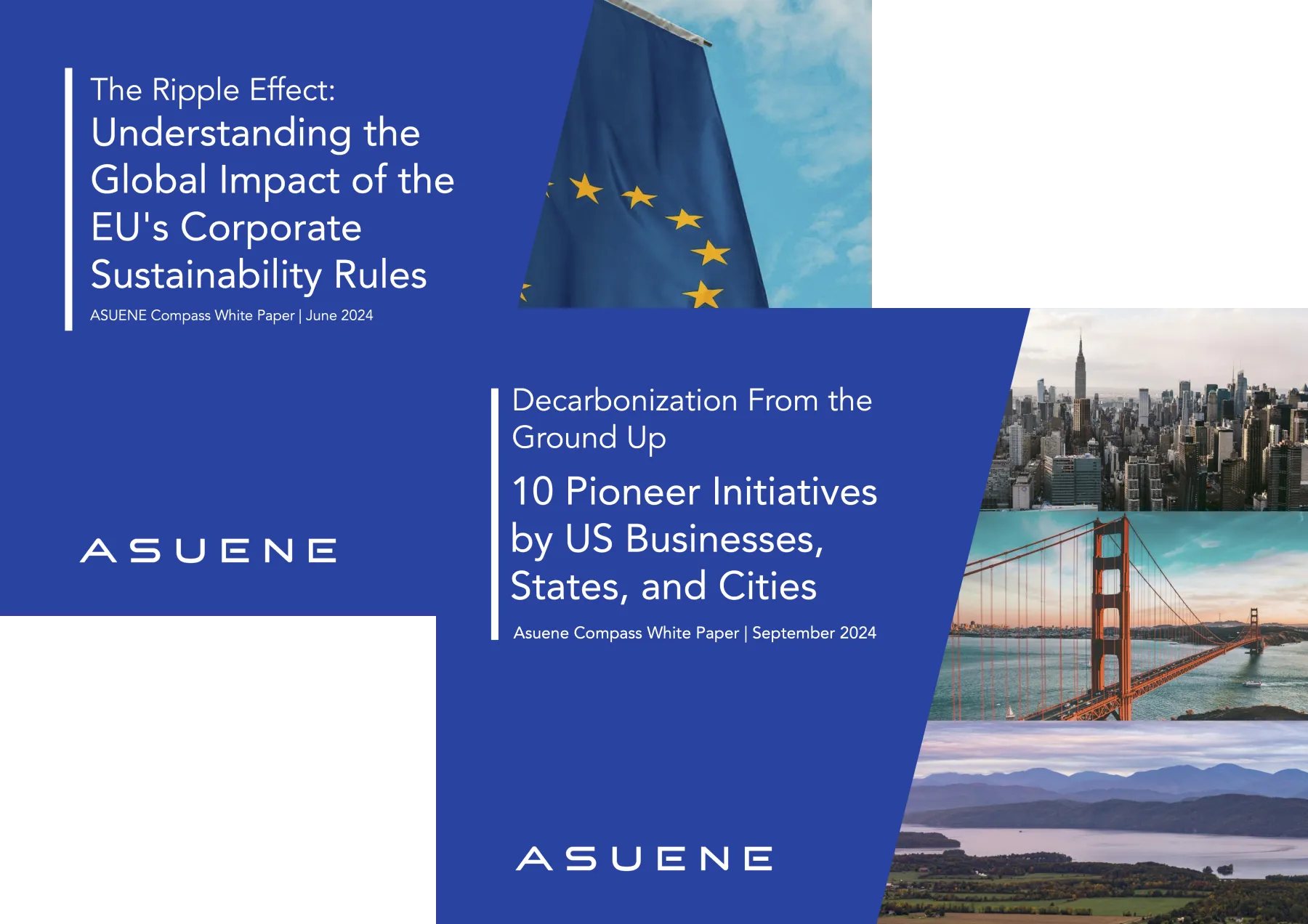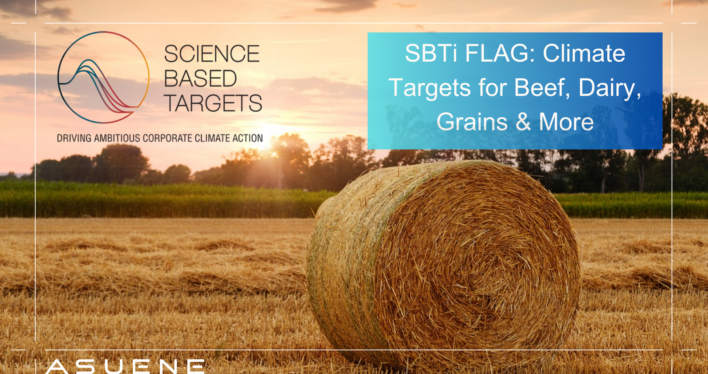- Article Summary
-
Overview
As climate change becomes an urgent issue, companies need to commit to reducing greenhouse gas (GHG) emissions across their entire supply chains. The Forest, Land, and Agriculture (FLAG) sector, in particular, accounts for about 22% of global GHG emissions, making its reduction essential. This article focuses on the FLAG guidance provided by the Science Based Targets initiative (SBTi), discussing its importance, components, and how companies can leverage it.
After reading the article you will be able to…
- Understand the Role and Importance of SBTi FLAG
- Grasp Key Concepts and Requirements
- Recognize Benefits for Companies
- Explore Strategic Implementation
What is SBTi FLAG?
The SBTi FLAG initiative provides a framework for companies engaged in activities related to forests, land, and agriculture to set and achieve science-based GHG emission reduction targets (SBTs). The FLAG sector includes a wide range of activities, such as land-use change, agricultural production, and forest management, which all contribute to GHG emissions. To address these emissions, SBTi has developed guidance and target-setting methodologies specific to the FLAG sector.
The FLAG initiative emphasizes reducing emissions across the entire value chain of companies. This means not only reducing direct emissions but also addressing emissions from sourcing raw materials to product sales and disposal.
Objectives
- Forest and Paper Products (Forestry, Timber, Pulp, Paper)
- Food Production (Agricultural Production, Animal-Based Food Production)
- Food and Beverage Processing (Food Factories, Beverage Manufacturing)
- Food and Staples Retailing (Supermarkets, Food Retail)
- Tobacco Products Manufacturing and Sales
Target Companies
In SBTi FLAG, companies that meet either of the following conditions are required to set FLAG-specific targets separately from other emission targets (FLAG-C1).
Condition 1: Companies in Specific Sectors Designated by SBTi
Companies belonging to the following sectors are required to set FLAG targets:
- Tobacco Products Manufacturing and Sales
- Forest and Paper Products (Forestry, Timber, Pulp, Paper)
- Food Production (Agricultural Production, Animal-Based Food Production)
- Food and Beverage Processing (Food Factories, Beverage Manufacturing)
- Food and Staples Retailing (Supermarkets, Food Retail)
Condition 2: FLAG-Related Emissions Exceeding 20% in Other Sectors
Even if a company does not belong to the specified sectors, it is required to set FLAG targets if FLAG-related emissions (including LUC emissions) account for 20% or more of total Scope 1–3 emissions.
Treatment of Small and Medium Enterprises (SMEs)
Small and Medium Enterprises (as defined by SBTi) are not required to set FLAG targets. However, they must comply with the existing SBTi guidance for SMEs.
When FLAG-Related Emissions Are Low
Even if a company belongs to a FLAG-designated sector, it is not required to set FLAG targets if land and agriculture-related emissions account for less than 5% of total emissions. However, in this case, FLAG-related emissions must still be included within the overall target scope and reported under non-FLAG targets (excluding FLAG removals).
| Condition | Target Companies | FLAG Target Setting | Notes |
| Designated Sectors | Companies belonging to… ・Forest ・Paper ・Products ・Agriculture ・Food Processing ・Retail ・Tobacco | Required | Mandatory if belonging to the sector |
| FLAG Emissions > 20% | Companies outside designated sectors with FLAG-related emissions ≥ 20% | Required | Percentage of total Scope 1–3 emissions |
| SMEs | SMEs as defined by SBTi | Not Required | Must comply with existing SBTi guidance for SMEs |
| FLAG-Related Emissions < 5% | Companies belonging to designated sectors with land and agriculture-related emissions < 5% of total emissions | Not Required | Must be included within the overall target scope and reported under non-FLAG targets (excluding FLAG removals) |
*Companies that do not meet either condition are exempt.
Pathways for Setting FLAG Targets
There are two pathways for setting FLAG targets, and companies must choose one.
a. FLAG Sector Pathway
The FLAG Sector Pathway targets companies with diverse emission sources, including those that are distant from production sites. This pathway adopts an absolute reduction approach, requiring companies to reduce their absolute greenhouse gas emissions by 3.03% annually. By doing so, it promotes concrete actions towards sustainable emission reductions and supports the achievement of the Paris Agreement’s goals.
b. FLAG Commodity Pathway
The FLAG Commodity Pathway is designed for companies whose emissions are concentrated in specific commodities. This pathway adopts the Intensity Convergence Approach, focusing on reducing the emission intensity per unit of production rather than absolute emissions. By targeting *11 of the key commodities, this approach enables companies to align their emission reductions with sector-specific benchmarks, contributing effectively to global climate goals.

*Currently, the FLAG Commodity Pathway covers the following 11 major commodities:
- Beef
- Chicken
- Dairy
- Leather
- Maize
- Palm Oil
- Pork
- Rice
- Soy
- Wheat
- Timber & Wood Fiber
These commodities are targeted for emission reductions based on climate models and emission data specific to each commodity. By leveraging detailed emission data, the pathway enables specialized and effective emission reduction strategies for each type of commodity.
| Pathway | Applicable Companies | Characteristics | Reduction Rate / Target Commodities |
| FLAG Sector Pathway | Companies with diverse emissions Enterprises away from production sites | Absolute reduction approach | 3.03% absolute emission reduction annually |
| FLAG Commodity Pathway | Companies with emissions concentrated in specific commodities | Intensity Convergence Approach | 11 major commodities (e.g., Beef, Chicken…) |

Scope of Targets and Emissions Coverage Rate
In SBTi FLAG, it is specified to what extent companies need to cover (manage) specific emission sources when setting reduction targets. This ensures that companies establish clear and robust emission reduction goals rather than vague ones.
The SBTi FLAG Guidance sets coverage requirements for emissions in Scope 1 (direct emissions) and Scope 3 (indirect emissions from the supply chain).
For Scope 1 (emissions from land directly owned or operated by the company), at least 95% of emissions must be included in the reduction target.
For Scope 3 (emissions related to purchased goods and services from suppliers), at least 67% must be covered. If Scope 3 emissions account for 40% or more of total emissions, FLAG emissions (from agriculture and land use) and non-FLAG emissions (from energy and industry) must be managed separately, each covering at least 67%. Biogenic removals (such as afforestation) can be included in FLAG targets but are not counted in coverage rate calculations. Also, FLAG-related removals cannot be included in non-FLAG (energy/industry) targets. Emissions should be calculated as Gross Emissions, excluding removals.
Thus, the minimum coverage requirements are 95% for Scope 1 and 67% for Scope 3, each independently.
Summary Table: Scope of Targets and Coverage Rates:
| Condition Item | Requirements | Coverage Rate |
| FLAG-related Scope 1 emissions | Direct emissions from company-owned sources | 95% or more |
| FLAG-related Scope 3 emissions | Indirect emissions from supply chain | 67% or more |
| Scope 3 Target Requirements | If Scope 3 ≥ 40% of total emissions | 67% or more (separately for FLAG and non-FLAG) |
| Separation of FLAG and non-FLAG emissions | If Scope 3 target is required | 67% or more for each |
| Treatment of removals in FLAG targets | Can be included but not in coverage rate calculation | |
| Definition of gross emissions | Excludes removals | |
| Minimum coverage conditions | Separate coverage for Scope 1 and Scope 3 | Scope 1: 95% or more Scope 3: 67% or more |
Recommendations
Even if FLAG-related emissions are less than 20%, it is recommended to set FLAG targets. In this case, FLAG emissions should be managed within non-FLAG targets, excluding removals.
Additionally, since September 2022, all companies have the option to voluntarily set FLAG targets, and it has become mandatory to include FLAG-related emissions in their inventories in accordance with the GHG Protocol’s Land Sector and Removals Guidance.
The application of the SBTi FLAG Guidance is expected to encourage companies to address emissions from land use, agriculture, and forestry sectors more concretely, thereby advancing their climate actions.
Benefits of Adopting SBTi FLAG Guidance
Enhanced Climate Action:Can deliver about 37% of the global mitigation needed by 2030 through emission reductions and carbon removals in the forest, land, and agriculture sectors.
Reliable Target Setting:Provides a science-based roadmap for achieving 1.5°C-aligned emission reductions.
Risk Management and Sustainability:Helps mitigate climate risks and improves data quality across supply chains.
Regulatory Compliance and Credibility:Facilitates compliance with international climate regulations and builds trust with investors and consumers.
Competitive Advantage:Enhances brand value and market differentiation through sustainable practices.
For More Information
For more details about FLAG SBTi, please refer to the following official documents:

Why Partner with ASUENE USA Inc.?

To navigate the complex climate disclosure requirements, appropriate tools and expertise are essential. This is where ASUENE USA Inc. comes in.
Carbon Accounting: Our advanced software solutions automate emissions tracking across Scopes 1, 2, and 3, integrating with existing ERP systems to reduce manual data entry errors. Proprietary algorithms align with GHG Protocol standards, ensuring compliance with ESG reporting mandates.
Third-Party Verification: ASUENE’s network of accredited auditors provides ISO 14064-compliant verification services, a critical step for companies seeking to validate their disclosures.
By partnering with ASUENE USA, businesses can transform regulatory obligations into strategic advantages, enhancing sustainability performance while minimizing compliance costs.
So, why not partner with us to streamline your reporting and environmental efforts? Let ASUENE USA Inc. help you stay ahead of the curve while making a positive impact on both your business and the planet.
Talk to us today for your sustainable transformation!
